Transforming an ordinary fence into a vibrant living garden wall offers multiple benefits for homeowners, especially those in dry or space-limited areas. This vertical gardening approach maximizes your growing space, creates natural insulation, improves air quality, and adds stunning visual appeal to your property. Whether you’re looking to grow fresh herbs, drought-resistant succulents, or flowering plants, a fence-turned-garden-wall can become the centerpiece of your outdoor space while conserving water and resources.
Benefits of Creating a Living Garden Wall
Space Optimization
Vertical gardening makes use of unused vertical space, perfect for small yards, balconies, or urban settings where ground space is limited. By utilizing your existing fence, you’re essentially creating a new gardening area without sacrificing valuable floor space.

Environmental Benefits
Living walls act as natural insulators, helping regulate temperatures around your home. They improve air quality by filtering pollutants, reduce noise pollution, and can even help manage rainwater runoff. For those in arid regions, a properly designed living wall can thrive while using minimal water resources.
- Improves air quality by filtering pollutants
- Provides natural insulation for your home
- Creates habitat for beneficial insects and pollinators
- Reduces ambient temperature in hot climates
- Helps manage rainwater when properly designed
Planning Your Living Wall
Before diving into construction, take time to assess your fence, understand your climate conditions, and select appropriate plants. Proper planning ensures your living garden wall will thrive with minimal maintenance.
Assess Your Fence
Not all fences are equally suitable for conversion to living walls. Evaluate your fence’s material, structural integrity, and exposure to ensure it can support your vertical garden.
- Material compatibility: Wooden fences work well with most mounting systems but may require waterproofing. Metal fences need rust-resistant hardware. Vinyl fences require special mounting considerations.
- Structural strength: Your fence must support the combined weight of planters, soil, plants, and water. Reinforce weak sections before installation.
- Sun exposure: Map the sunlight patterns on your fence throughout the day. Note which sections receive full sun, partial sun, or shade to guide plant selection.
- Water access: Consider proximity to water sources for irrigation. Installing a drip system is easier when water access is nearby.
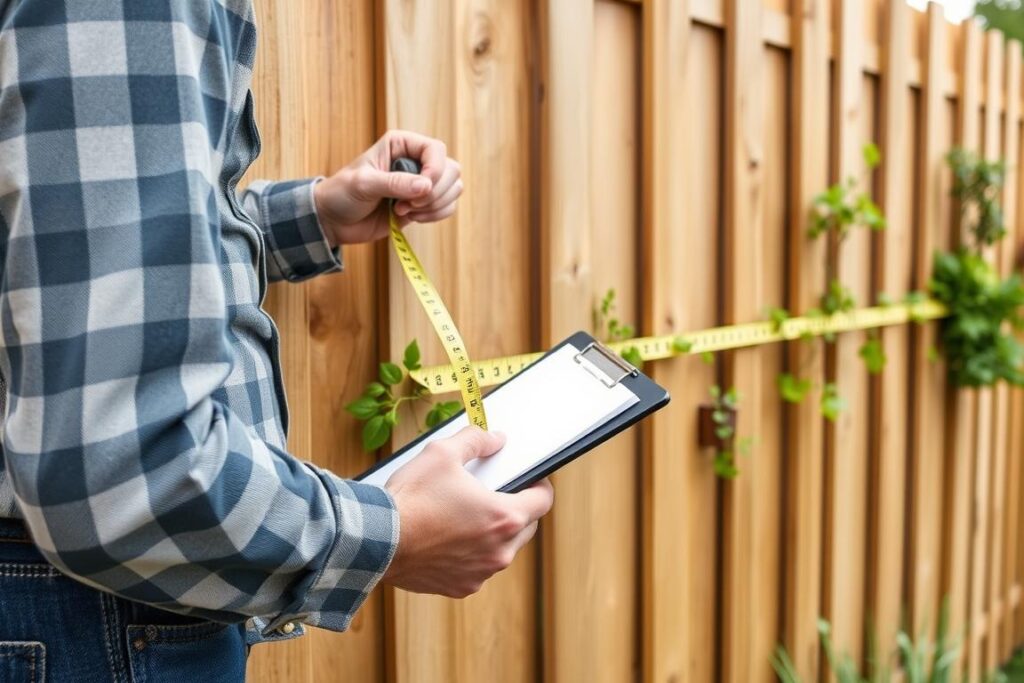
Fence Checklist: Before starting, ensure your fence posts are securely anchored, boards are in good condition, and the structure can handle additional weight. Replace any rotting wood or rusted metal components.
Choose Drought-Resistant Plants
For water-smart gardening, especially in arid regions, selecting drought-tolerant plants is essential. These plants will thrive with minimal watering while still creating a lush appearance.
Succulents

Succulents store water in their leaves and stems, making them perfect for dry conditions. Consider varieties like:
- Sedum (stonecrop)
- Echeveria
- Sempervivum (hens and chicks)
- Crassula (jade plant)
Herbs

Many herbs originate from Mediterranean climates and thrive with minimal water:
- Rosemary
- Thyme
- Sage
- Lavender
- Oregano
Drought-Tolerant Flowers

Add color with these water-wise flowering plants:
- Salvia
- Yarrow
- Blanket flower (Gaillardia)
- Lantana
- Black-eyed Susan
Get Our Free Plant Guide
Download our comprehensive guide to drought-resistant plants perfect for vertical gardens in your specific climate zone.
Water-Smart Systems
Efficient irrigation is crucial for maintaining a living wall, especially in dry climates. Consider these water-smart approaches:
Drip Irrigation
A drip system delivers water directly to plant roots, minimizing evaporation and runoff. Install a timer to automate watering during cooler hours of the day.

Self-Watering Planters
These containers include a water reservoir that plants can access as needed, reducing watering frequency and preventing overwatering.
Rainwater Harvesting
Connect a rain barrel to your gutter system and use collected rainwater for your living wall. This sustainable approach reduces water usage and costs.
Water Conservation Tip: Group plants with similar water needs together. This prevents overwatering some plants while trying to meet the needs of thirstier varieties.
Tools and Materials
Essential Tools
- Drill with various bits
- Level
- Measuring tape
- Screwdriver set
- Hammer
- Utility knife
- Garden pruners
- Watering can or hose with spray nozzle
Materials Needed
- Mounting hardware (screws, brackets, hooks)
- Waterproof barrier (if using a wooden fence)
- Planters or containers (plastic, metal, fabric)
- Lightweight potting mix
- Drip irrigation components (optional)
- Landscape fabric
- Plants of your choice
- Slow-release fertilizer

Step-by-Step Installation
Preparing Your Fence
Before attaching any planters, prepare your fence to ensure it can support your living wall and withstand increased moisture exposure.
- Inspect and repair any damaged fence sections, replacing rotted wood or rusted metal.
- Clean the fence surface thoroughly to remove dirt, mold, or peeling paint.
- For wooden fences, apply a waterproof sealant to protect against moisture damage.
- Mark planter positions with chalk or pencil, ensuring even spacing and weight distribution.
- Pre-drill holes for mounting hardware to prevent splitting wood or damaging vinyl.
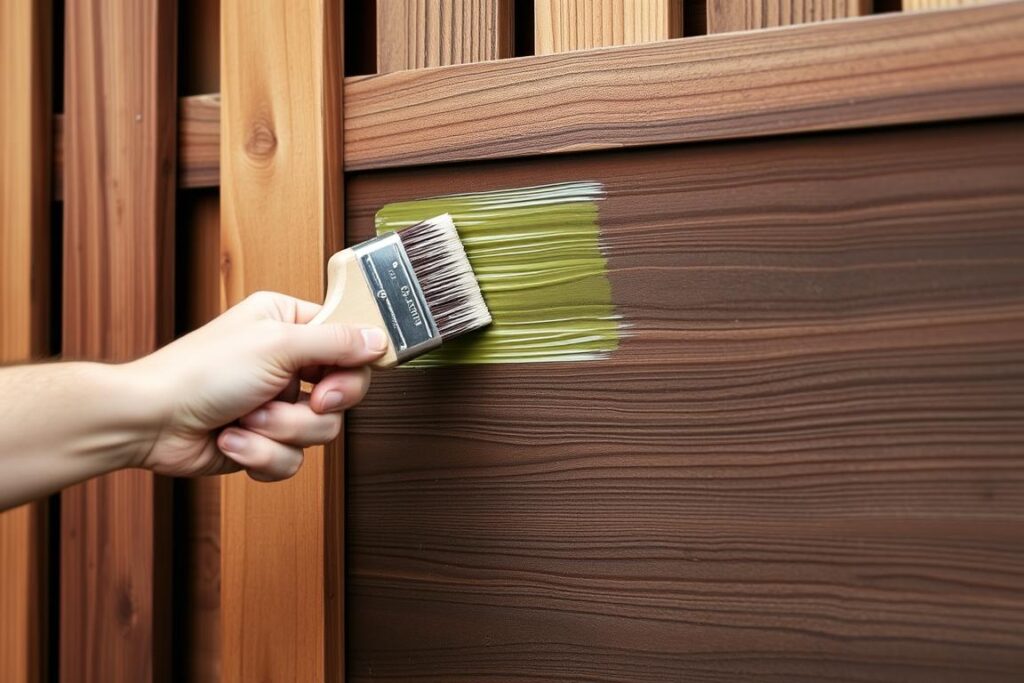
Important: Always check with your local authorities regarding fence modifications, especially if you share the fence with neighbors or live in an HOA-regulated community.
Mounting Options for Planters
There are several ways to attach planters to your fence. Choose the method that works best for your fence material and the weight of your containers.
Bracket System

Metal brackets provide sturdy support for heavier planters. Install brackets first, then place containers on top or hang them from the brackets.
Hanging Planters

Use decorative hooks or hangers to suspend lightweight planters. This method creates less stress on the fence and allows for easy rearrangement.
Pocket Planters

Fabric pocket planters can be directly attached to the fence with screws and washers. These lightweight options work well for herbs and small plants.
Soil Preparation
The right soil mix is crucial for vertical gardens, as it needs to be lightweight while retaining adequate moisture.
Recommended Soil Mix
- 60% coconut coir or peat moss (for water retention)
- 30% compost (for nutrients)
- 10% perlite or vermiculite (for drainage and aeration)
For succulents and cacti, add more perlite (up to 30%) to improve drainage and prevent root rot.
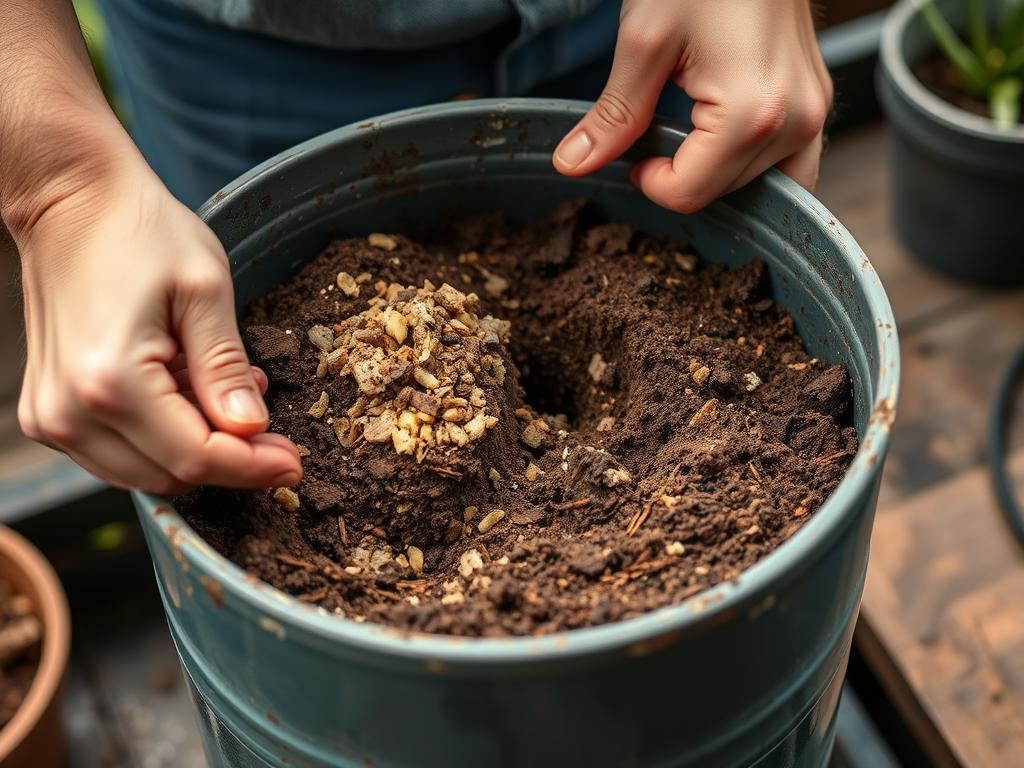
“The success of your living wall depends largely on your soil mix. It needs to be light enough to reduce weight stress on your fence while retaining enough moisture to keep plants healthy between waterings.”
Planting Your Living Wall
Arranging Plants
Before planting, arrange your containers on the ground to plan your design. Consider these strategies:
- Height variation: Place taller plants at the top or center as focal points.
- Cascading effect: Position trailing plants where they can spill downward.
- Color coordination: Group complementary colors or create a gradient effect.
- Texture contrast: Mix fine-textured plants with bold-leaved varieties.
- Functional grouping: Keep herbs together for easy harvesting.
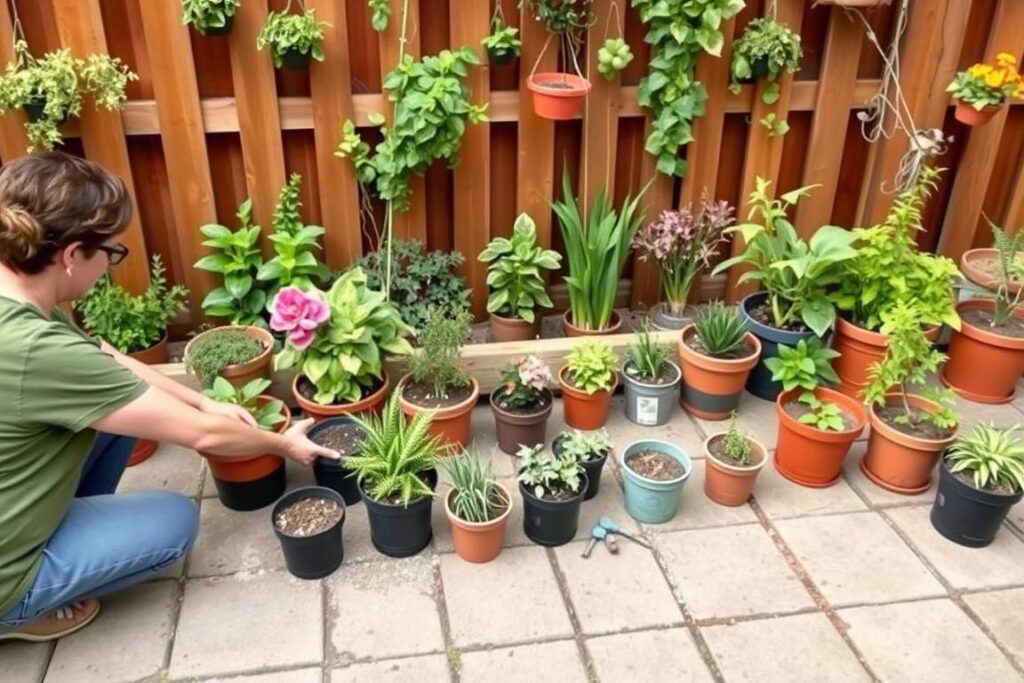
Design Tip: Take a photo of your arrangement before mounting. This serves as a reference guide during installation and helps maintain your planned design.
Planting Process
- Fill your containers about 2/3 full with your prepared soil mix.
- Gently remove plants from their nursery pots, loosening the root ball slightly.
- Position plants in containers, ensuring they sit at the same depth as in their original pots.
- Add additional soil around the roots, firming gently but not compacting.
- Leave about 1/2 inch of space below the container rim for watering.
- Water thoroughly after planting to help soil settle around roots.

Need Help With Plant Selection?
Join our community of vertical gardening enthusiasts and get personalized plant recommendations for your specific climate and conditions.
Maintenance and Care
Watering Schedule
Proper watering is critical for living walls, especially in dry climates. Develop a schedule based on your climate, plant selection, and season.
General Guidelines:
- New plants: Water every 1-2 days for the first two weeks to establish roots.
- Established plants: Reduce to 2-3 times per week, adjusting for weather conditions.
- Winter months: Cut back to once weekly or less, depending on dormancy.
- Succulents: Allow soil to dry completely between waterings.
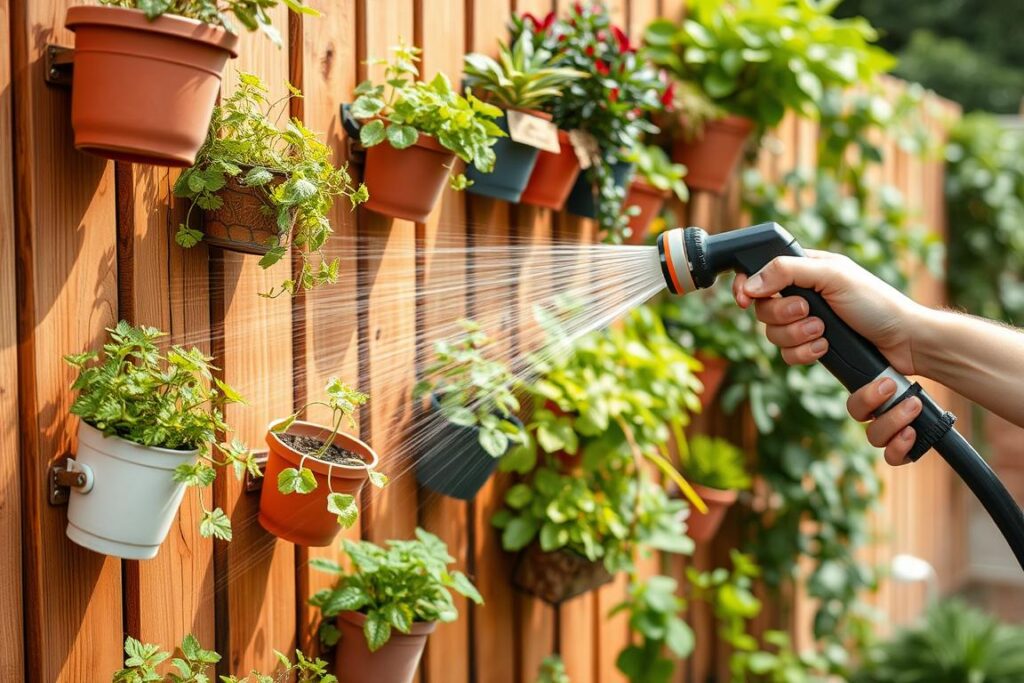
Water-Smart Tip: Water in the early morning to reduce evaporation and allow foliage to dry before evening, which helps prevent fungal diseases.
Seasonal Care
| Season | Maintenance Tasks | Special Considerations |
| Spring | Prune dead growth, apply slow-release fertilizer, check irrigation system | Watch for early pest issues, replace winter-damaged plants |
| Summer | Increase watering frequency, monitor for heat stress, deadhead flowers | Provide afternoon shade if needed, check for irrigation clogs |
| Fall | Reduce fertilizing, trim back overgrowth, plant cool-season varieties | Prepare sensitive plants for temperature drops |
| Winter | Minimal watering, protect from freezing, check fence integrity | Consider temporary covers during extreme cold, drain irrigation lines |
Fertilizing
Vertical gardens in containers need regular fertilizing as nutrients can be depleted quickly.
- Apply a balanced, slow-release fertilizer in spring and mid-summer.
- Use liquid fertilizer at half-strength monthly during the growing season.
- For edibles, choose organic fertilizers to keep your harvest safe.
- Reduce or eliminate fertilizing during fall and winter months.

Troubleshooting Common Issues
Common Problems
- Uneven watering: Some plants dry out while others stay soggy
- Plant wilting: Despite regular watering
- Yellowing leaves: On multiple plants
- Pest infestations: Aphids, spider mites, or scale
- Fence damage: Moisture-related issues
Solutions
- Group plants with similar water needs, adjust irrigation accordingly
- Check for root binding or poor drainage, consider repotting
- Evaluate fertilizer levels, may indicate nutrient deficiency or excess
- Introduce beneficial insects or use organic insecticidal soap
- Reinforce waterproofing, ensure proper drainage away from fence
What if my fence can’t support heavy planters?
If your fence has weight limitations, opt for lightweight solutions such as fabric pocket planters, vertical gutter systems, or foam-based living wall panels. You can also install a secondary support structure that transfers weight to the ground rather than relying solely on the fence.
How do I prevent my living wall from damaging my fence?
Install a waterproof barrier between planters and the fence surface. Ensure proper drainage in all containers to prevent water accumulation. Regularly check for signs of moisture damage and address issues promptly. For wooden fences, reapply waterproof sealant annually.
What should I do if plants in my living wall die?
Remove dead plants promptly to prevent disease spread. Before replacing, evaluate what might have caused the failure—insufficient light, improper watering, or pest issues. Choose replacement plants that are better suited to the specific conditions of that position in your living wall.

Creative Ideas for Your Living Fence
Herb Kitchen Garden

Install your herb living wall near your outdoor cooking area or kitchen window. Group culinary herbs like basil, thyme, rosemary, and mint for easy harvesting while preparing meals.
Flowering Privacy Screen

Create a living privacy screen with dense, flowering plants. Mix climbing varieties like jasmine or clematis with container plants for a lush barrier that offers both beauty and seclusion.
Succulent Art Display

Arrange succulents in patterns or designs to create living art. Their varied colors and textures make them perfect for creating mosaics, mandalas, or other artistic displays that require minimal water.
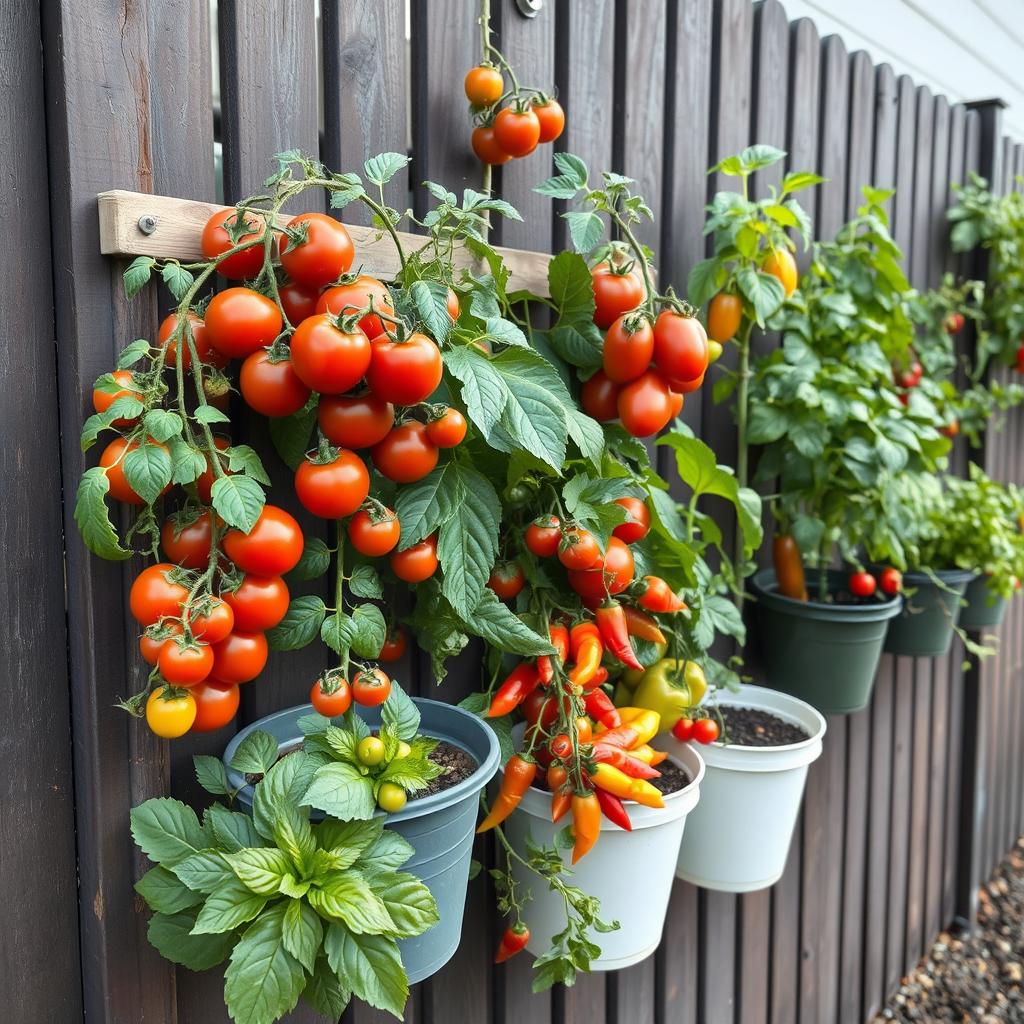
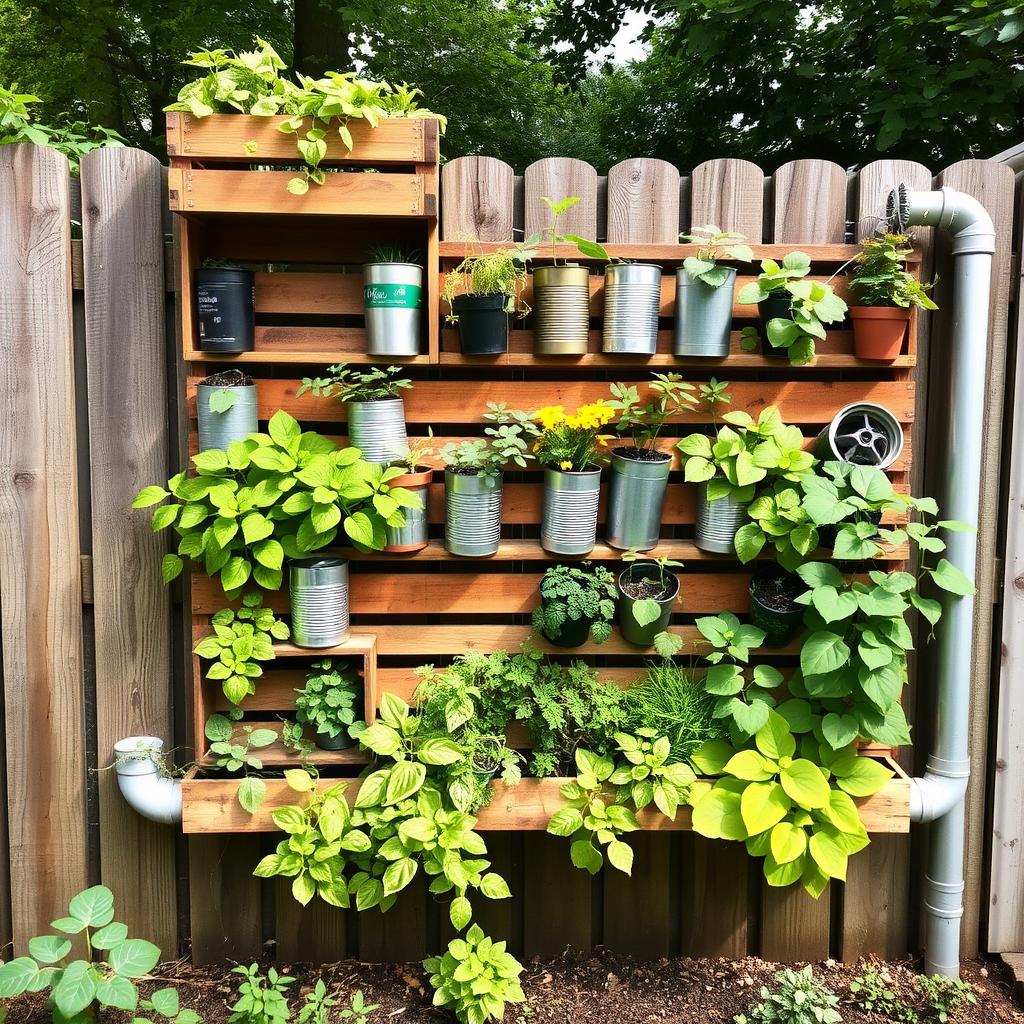
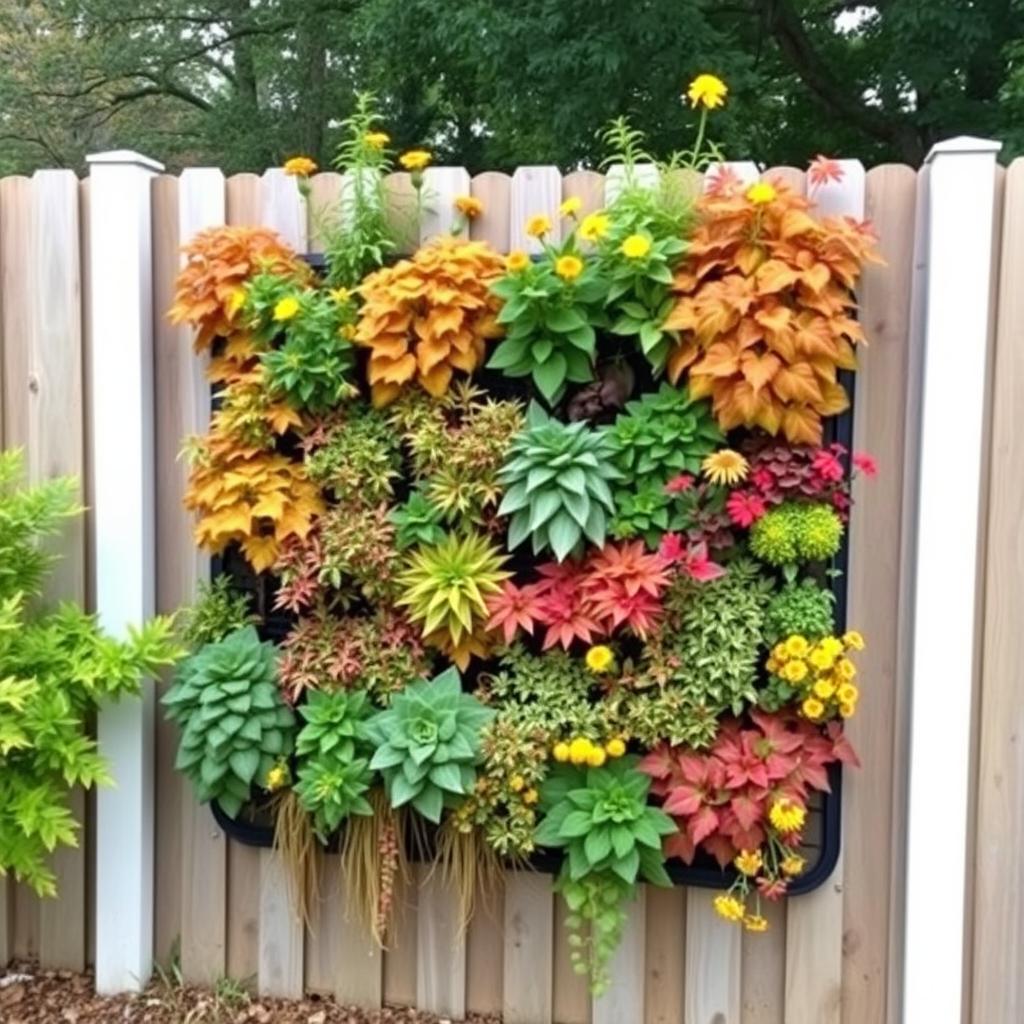
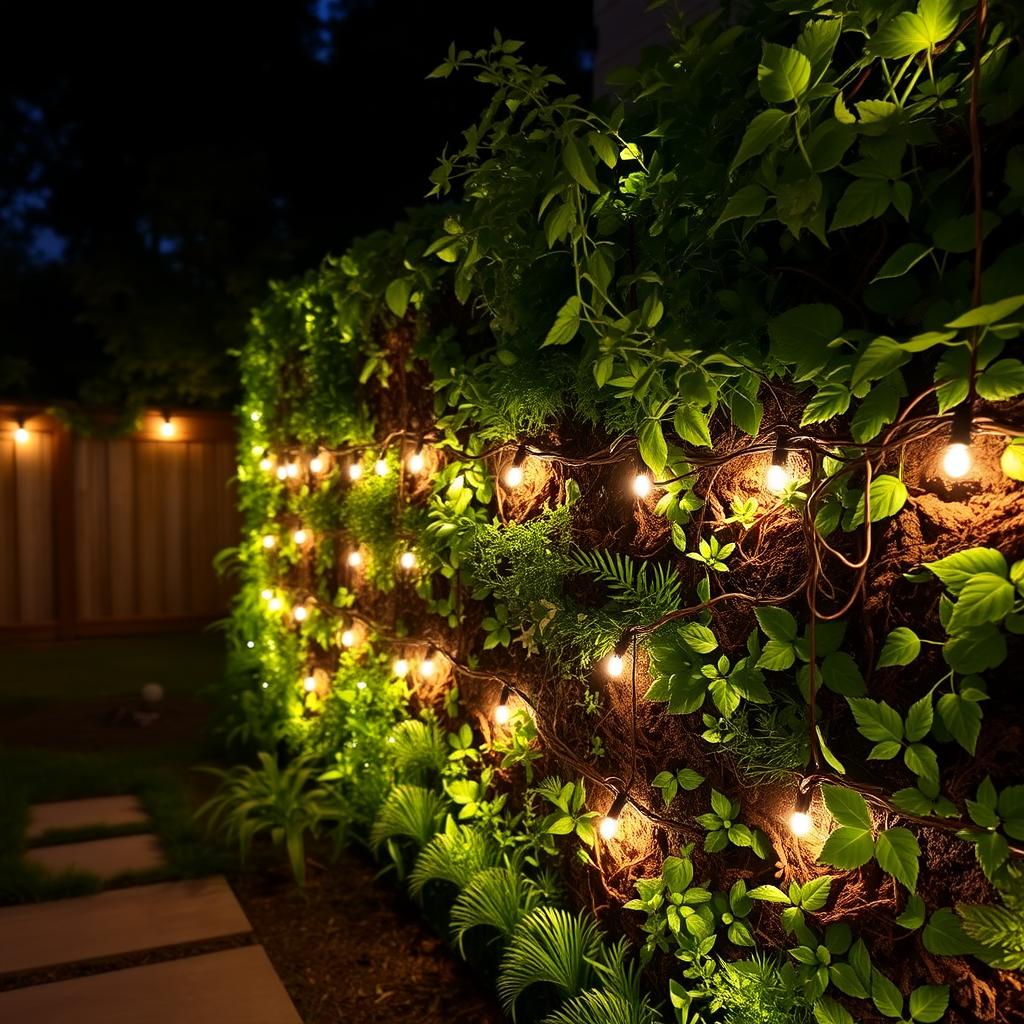
Start Your Living Garden Wall Journey
Transforming your fence into a living garden wall is a rewarding project that combines creativity with practical benefits. By following the steps outlined in this guide, you can create a sustainable, water-smart vertical garden that enhances your outdoor space while providing beauty, privacy, and potentially even fresh herbs or vegetables.
Remember that your living wall is an evolving project. Start small if you’re new to gardening, and expand as you gain confidence. Experiment with different plants and arrangements to discover what works best in your specific conditions. With proper planning, installation, and maintenance, your fence can become a stunning living feature that brings joy for years to come.
Stay Connected for More Gardening Tips
Subscribe to our newsletter for seasonal gardening advice, plant recommendations, and exclusive tutorials on sustainable gardening practices.

Will is a vertical gardening enthusiast and sustainable cultivation specialist with a passion for helping people grow fresh food in small spaces and dry climates. With years of hands-on experience testing smart irrigation systems, optimizing urban gardens, and exploring eco-friendly solutions, this author shares clear, practical tips to turn any corner into a productive garden. Whether on a sunny balcony or in a compact backyard, Will helps readers save water, maximize space, and enjoy healthy harvests year-round. When not tending to his plants, you’ll find him sipping herbal tea and sketching ideas for new sustainable projects.

